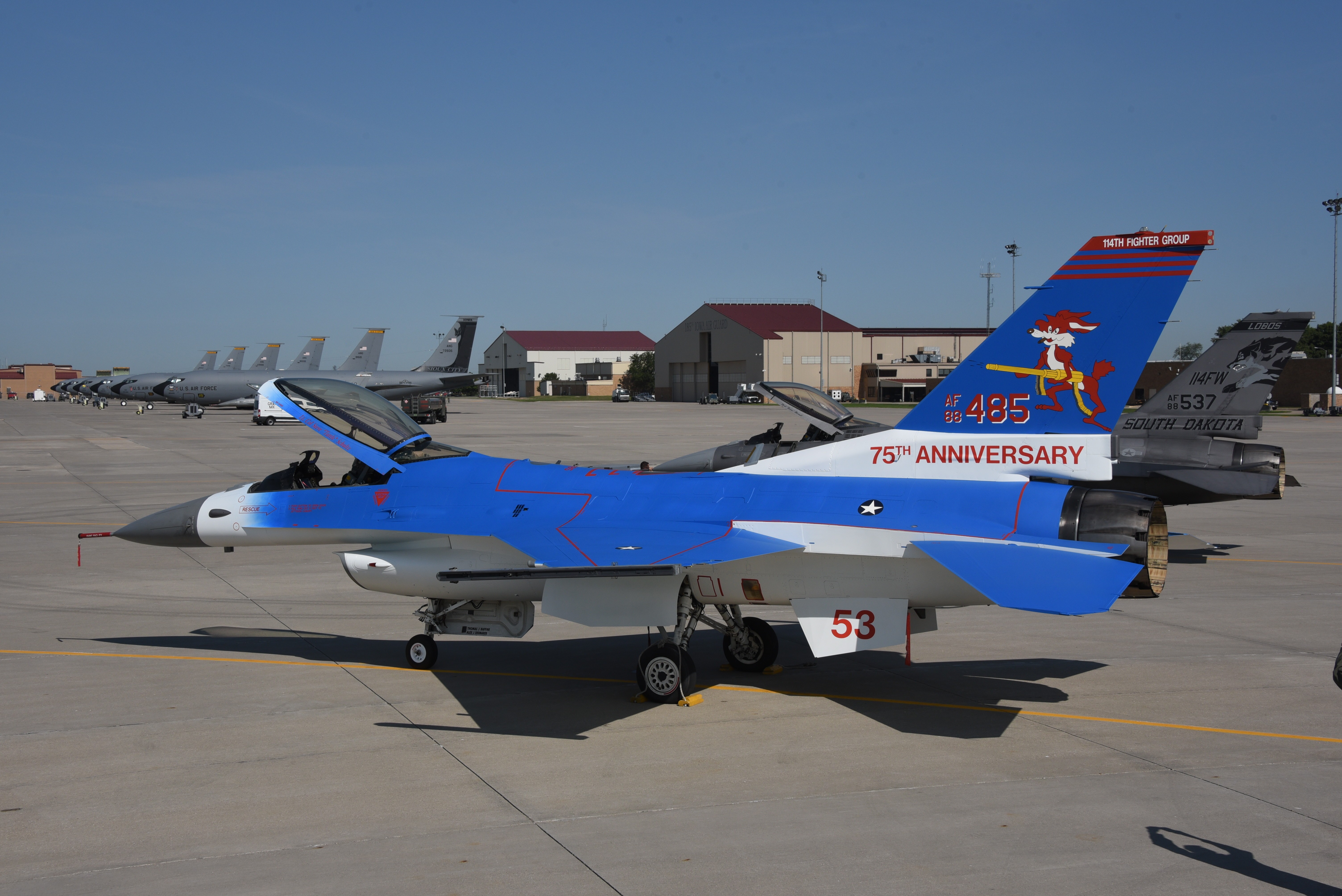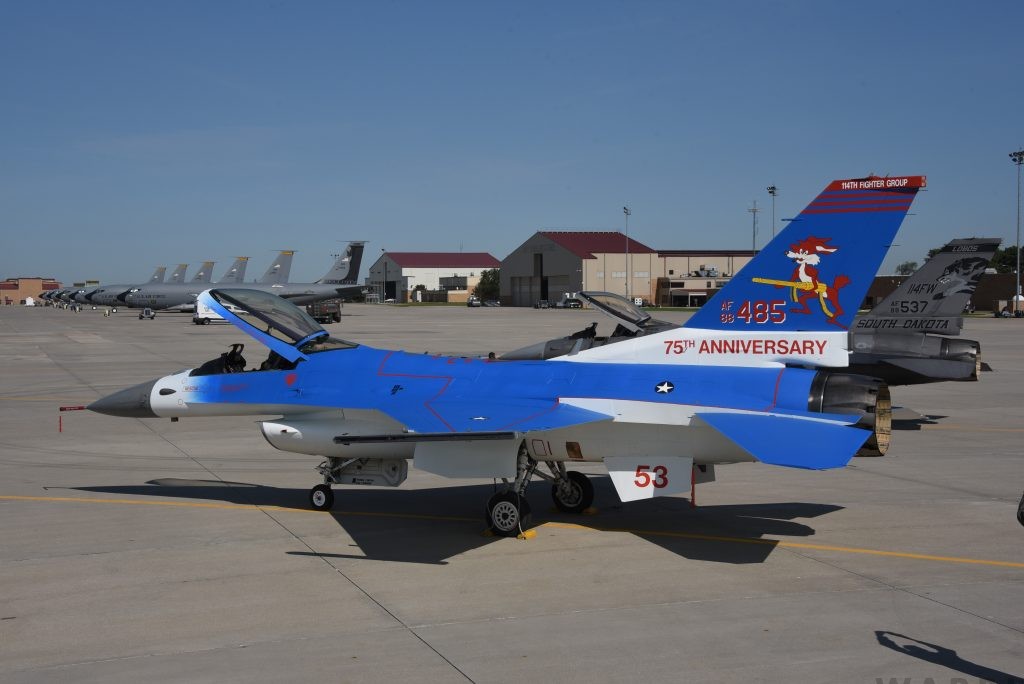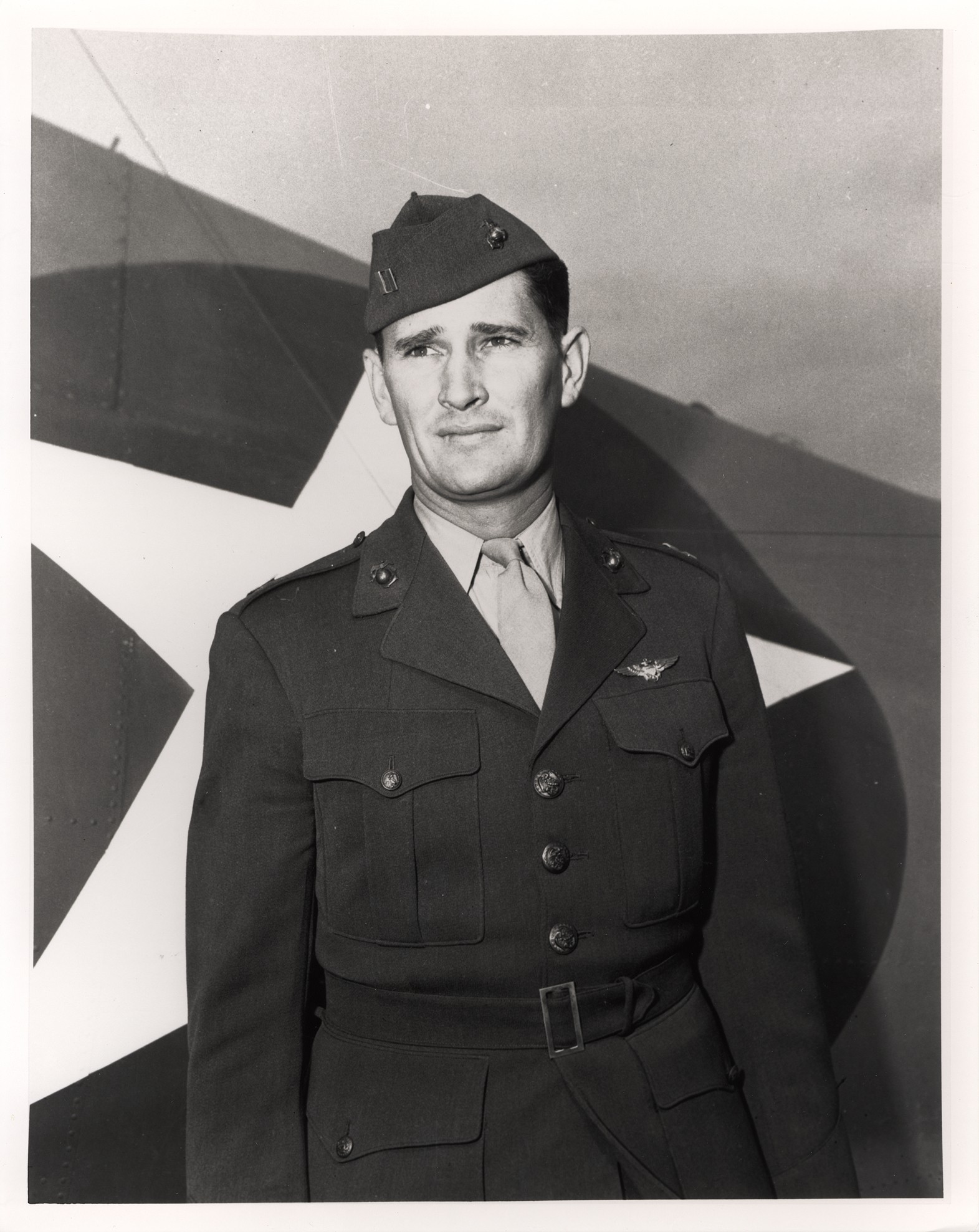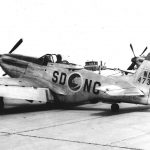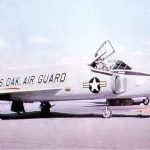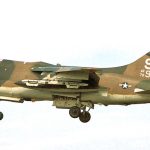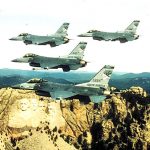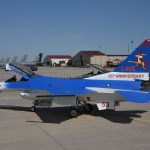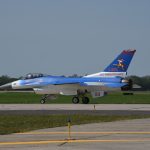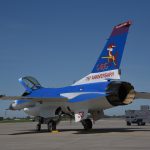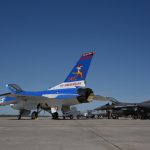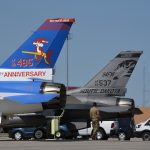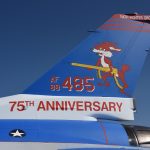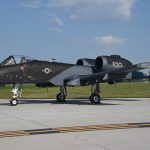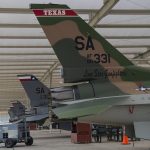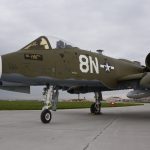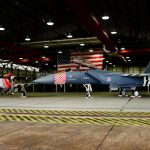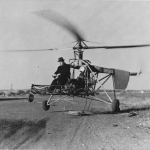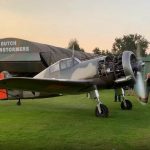by Stephen Chapis
Over the past several months we have featured several recent examples of heritage and commemorative paint schemes applied to currently serving U.S. military aircraft; a pleasing renaissance of such schemes, especially in Air Guard units, seems now to be in vogue. A majority of this artwork pays tribute to a particular era or anniversary for a specific unit. It is rare for such designs to honor an individual, but this is exactly what the South Dakota Air National Guard’s (SD ANG) 114th Fighter Wing has accomplished, adorning F-16C Fighting Falcon 88-485 with a livery commemorating one of the state’s prodigal sons, the legendary Joe Foss.
Some of the fiercest combat during America’s first year of fighting in WWII took place in the Guadalcanal Campaign. Beginning in August, 1942, the campaign, dubbed Operation Watchtower, marked the first land offensive by Allied troops against Japanese forces in the Pacific Theatre. Although a wounded tiger, having lost the bulk of their fleet carriers during the Battle of Midway that June, Japan still fielded a prodigious and tenacious military. The fighting was brutal, with both sides taking a severe beating. The U.S. Marine Corps, of course, was heavily involved both on the ground and in the air. One of their ‘flying leathernecks’ was the fighter pilot Joseph J. Foss, who managed to shoot down 26 enemy aircraft between October 1942 and January 1943. It was an incredibly short span of time for such a feat, which matched the previous American record set by Eddie Rickenbacker during WWI. Foss received the Medal of Honor as a result, and finished the war as the Marine Corps’ top-scoring ace. Foss’s incredible WWII career often overshadows his similarly impressive postwar career in the military, aviation, politics, and sports.
Although Foss remained within the inactive Marine Corps Reserve until 1947, he was appointed a lieutenant colonel in the South Dakota National Guard and played a vital role in establishing the 175th Fighter Squadron (FS) when they received federal recognition on September 20, 1946. In the squadron’s early years, Foss served in the unit’s aerial demonstration team, flying F-51 Mustangs, and as their commanding officer. During the Korean War, Foss relinquished command of the 175th after being called to active duty with the U.S. Air Force; he served as a Director of Operations and Training for the Central Air Defense Command. Foss retired from the U.S. Air Force as a brigadier general.
After launching the Fighter Wing and serving as its inaugural commander, Foss went on to serve as the 20th governor for the state of South Dakota. Among his many other non-military endeavors Foss also became the founding commissioner of the American Football League, helping establish the sport as a fully professional endeavor. He also hosted the ABC television program The American Sportsman, for several years in the mid-60s, and during the late 1980s, he served two one-year terms as president of the National Rifle Association
But despite his many achievements as a civilian, it is for his prowess in the air that Foss is remembered by many. His ties to South Dakota and the Air National Guard’s 175th FS remain strong. Through the decades, the 175th FS, which presently operates from Joe Foss Field in Sioux Falls, South Dakota, has flown the F-51D Mustang, F-94 Starfire, F-89 Scorpion, F-102 Delta Dagger, F-100 Super Sabre, and, penultimately, the A-7 Corsair II. They have been flying their most recent steed, the F-16 Fighting Falcon, since 1991. And it is one of the latter aircraft types which now wears a unique new livery…
First formed in 1946, the SD ANG recently commissioned special markings for one of their F-16Cs. Unlike most such liveries, this example plays a dual role; it commemorates the unit’s 75th anniversary while also paying tribute to its most famous member, Joe Foss. The light blue and white scheme, while a little off in hue, is intended to emulate the colors worn by the Grumman F4F Wildcats which Foss flew to such great effect in the Guadalcanal Campaign.







